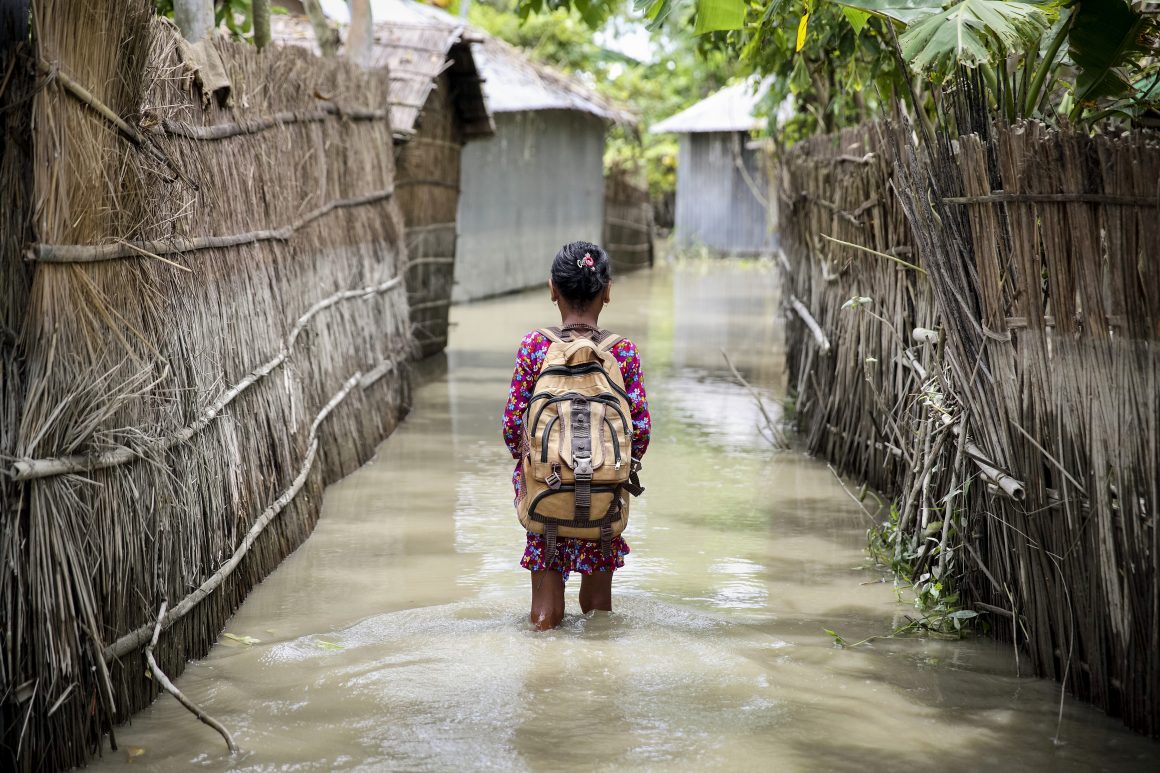Climate change is pushing families in many of Bangladesh’s poorest communities over the edge, leaving them unable to keep their children properly housed, fed, healthy and educated.
Read on to learn why Bangladesh is so vulnerable to the effects of climate change.
Why is Bangladesh so Vulnerable to Climate Change?
Bangladesh boasts an extremely flat topography, with two-thirds of the country lying less than five metres above sea level. This, coupled with the fact that much of the population live on exposed, low lying sea coast, means that the country is particularly vulnerable to climate change.
The most recent major flooding of the Brahmaputra River in 2017 caused a huge increase in patient admissions to 480 community health clinics. In addition, 50,000 tube wells were damaged, which jeopardised the supply of safe drinking water for many communities.
The country’s high population density and poor civic infrastructure mean that when flooding or cyclones strike, communities feel the full, destructive force of nature.

Children Are Most at Risk
Today in Bangladesh, there are 19.4 million children are at risk from the effects of climate change. That may seem like a huge number, but one-third of Bangladesh’s 64 districts are deemed at risk.
Cox’s Bazar, which is particularly exposed to the dangers of cyclones, is home to the country’s largest population of young people, with an estimated 1.7 million residents being under-18.
Whenever there’s a natural disaster it’s usually children who suffer most. UNICEF research has discovered many examples of children who died during flooding or other extreme weather events. It’s hard to quantify such tragedies but we do know that a very large number of children die every year due to drowning.
Well over 14,000 boys and girls aged 0 – 17 years died by drowning in 2016. What we can’t be sure of is the number of these deaths which can be attributed to climate change-related factors, but its clearly a matter of huge concern.
The threat posed by climate change to children goes far beyond these catastrophic events. In the long-term families, which are already living on the poverty line will be pushed even deeper into poverty, forcing them to take decisions which will negatively impact their children’s lives forever.
Child Poverty
Over time, and after a number of enforced moves (usually driven by environmental factors), families can decide to abandon their rural homes and moving to the big cities to find work.
Rural families usual move to slums in Dhaka and Chittagong, which are completely deprived and unsafe. Children are often left behind in dangerous and unhealthy slums, where child-care, health and education services are non-existant.
In situations like this young people can become adrift, leave school and find themselves forced to take on hazardous and exploitive work. Many girls are pressed into entering early marriages to escape poverty.

What Can Be Done to Help?
More resources and innovative programmes are urgently needed to avert the danger that climate change represents to children. Since Bangladesh first developed a national Climate Change Strategy and Action Plan in 2009, much has been done to make vulnerable communities resilient to the dangers of climatic shock.
One result has been a dramatic reduction in the mortality rate caused by cyclones over recent decades. However, concerted and sustained action is needed to ensure that Bangladesh’s health and education services are protected from the effects of climate change.
UNICEF’s Work in Bangladesh
UNICEF will work to ensure that children who are threatened by climate disaster or forced to migrate by climate change, have continued access to education.
We also plan to make sure that health services continue to function, especially for children and pregnant women, during seasonal hardships and disruptions.
To help Bangladeshi children, please donate to our Cyclone Fani Emergency Appeal.


